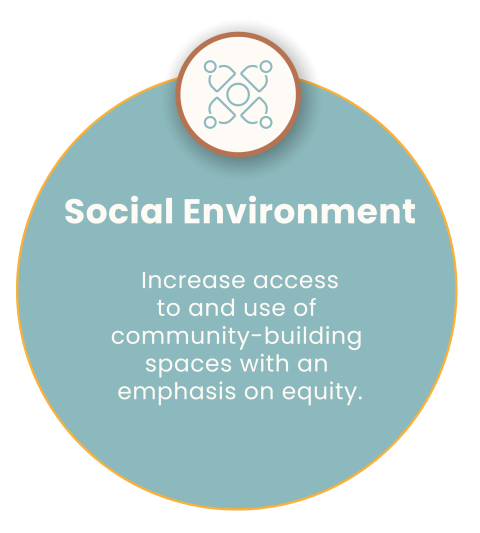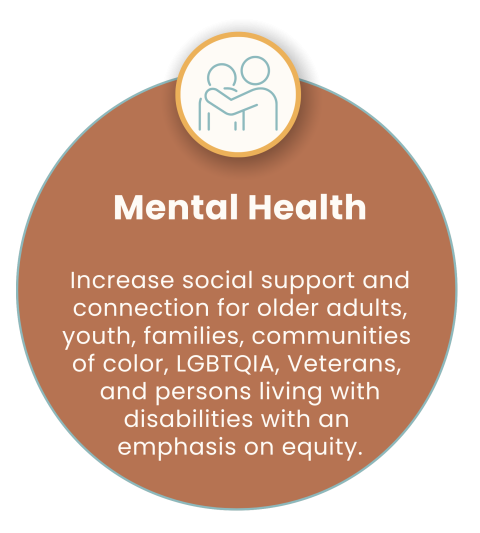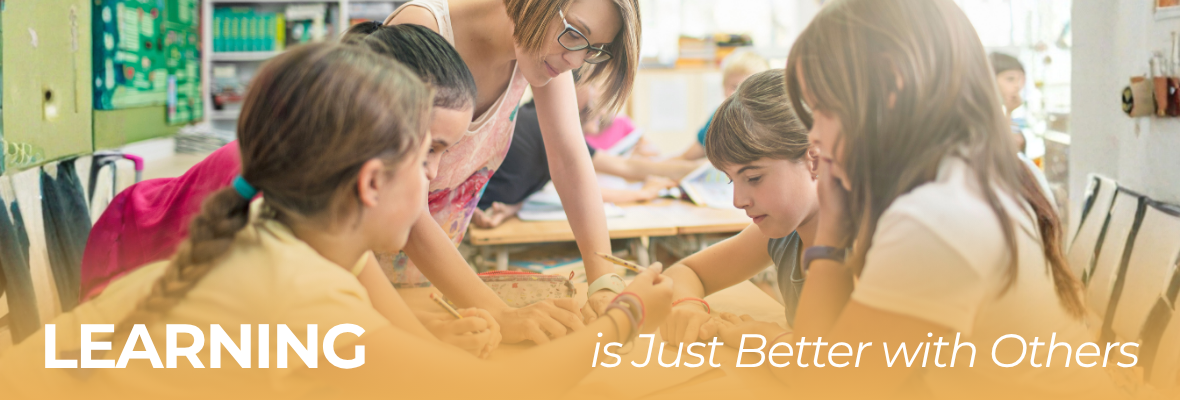Purpose: In line with Priority Statement 2, these outings are intended to build community and social belonging and to promote different transportation options so people can stay socially connected and meet other needs by learning about various transportation networks. The events in 2025 were organized and executed in partnership with Fort Collins Moves, targeting parents and Latina community members.
Progress: Three events were organized in 2025. The first, organized for the summer, involved walking in community to a park in North Fort Collins. The other two, organized for the fall, will allow attendees to travel to Greeley and Denver using several means of public transportation.
Get Involved: Please reach out to jbuckley@larimer.org to share ideas for future outings.
Purpose: We heard from CHIP partners that they were confronted by gaps in services or had problems referring clients to needed services. In August of 2025 we hosted a Healthcare Access Convening to address these concerns.
Progress: CHIP Staff now moderate an online group of healthcare providers and community advocates to quickly ask connections, connect care resources, and identify gaps in community resources. We also plan to host events highlighting the different options for Urgent Care vs Emergency Room care to ensure families and individuals can make the best choice for their family before an emergent health situation arises.
Get Involved: Please let us know your thoughts and feedback for how we can better partner with communities and share existing healthcare options by emailing jbuckley@larimer.org
Learn about the benefits of volunteering, read volunteers' stories, and find ways to get involved at larimer.gov/volunteerism.
Purpose: Serving your community is a powerful way to address loneliness and isolation while contributing to the betterment of our county. One way we are promoting social connection at the health department is by launching a campaign to highlight the health benefits of volunteering, showcasing local volunteer opportunities, and streamlining ways for folks to become involved in their community.
Progress: We are currently building out a process for local organizations to be highlighted for their work and volunteer opportunities. Stay tuned for more information on the benefits of volunteering and its health impacts on our socials.
Get Involved: Find a volunteer opportunity near you at Volunteer Match or let us know how we can spotlight the great volunteer opportunities your organization offers. If you have a volunteer story or highlight that you’d like to share with us, please contact jbuckley@larimer.org.
Purpose: We heard from rural Larimer county residents who access the North 40 Alliance (N40) Food Pantry in Red Feather Lakes that social connection was a key need. Folks come from various surrounding neighborhoods and towns to pick up food on Fridays and CHIP staff hosts our pop-up Connection Café to foster conversation and connect residents to county resources.
Progress: The Connection Café program launched in May of 2025 and has met monthly through the summer. We are preparing to continue this social connection opportunity through the winter months and support the N40 alliance as a cornerstone organization in the area.
Get Involved: If you would like to see a specific resource at the food pantry, or if you are an organization interested in sharing your work with county residents in the Red Feather lakes area, please email your ideas to jbuckley@larimer.org
Purpose: In meeting with various community partners, we consistently heard of a disconnect between organizations who support submitting Medicaid applications and the county office processing those applications. Medicaid is a critical social support in Larimer County so we committed to learning how we can solve the communication gap and make the process easier for county residents to get what they need.
Progress: In 2024, we were successful in reaching all of the various organizations across the county who support individuals and families with the Medicaid application. Our work culminated in a meeting in November that brought together community health clinics, social services application support, and the county Medicaid team. We are now continuing to work on the next steps from that meeting including advocating for software improvements at the state level, creating shared training videos, and streamlining how community organizations can contact the county offices.
Get Involved: In the future, we would like to explore supporting organizations that would like to accept Medicaid and expand their client base. If your organization or practice is interested, please reach out to jbuckley@larimer.org.
Purpose: Mobile home parks constitute much of the naturally occurring affordable housing in our county, and our priority at the health department is making sure mobile home park residents have the opportunity for a healthy life. By partnering with Mi Voz, we are able to learn the intricacies of any issues, strengths, and community needs within the park through data collection and relationship building.
Progress:
- 2024: We partnered with the Mi Voz program at The Family Center/La Familia to assess community needs and create a survey focused on housing insecurity in mobile home parks and other factors that affect public health. Mi Voz leaders got extremely high response rates from their communities, which greatly informs the work and priorities for the coming years. Beyond housing stability, Mi Voz leaders will be collecting data around water quality, public safety, park infrastructure, and community needs.
- 2025: CHIP Staff join in on monthly meetings with Mi Voz leaders representing Mobile Home Park Communities across the county. In partnership with Mi Voz leaders, we held two Community Clean Up Days in 2025, where park residents could dispose of, recycle, or donate items and then connect to local resources. Both events were a great success with over 100 families participating each day. Neighbors were able to build community with each other, and Mi Voz leaders gathered feedback and developed new systems to enhance their community advocacy work. We are honored to continue this collaboration with so many great leaders from across the county!
Get Involved: Please let us know your thoughts and feedback for our work in Mobile Home Park communities by emailing jbuckley@larimer.org
Purpose: The business sector is a critical part of our community and a space we are supporting more connections into the non-profit community. We are working on starting a new program to connect local nonprofits with businesses in Larimer County to make in-kind donations easier and more efficient. Non-profits will be able to list what they need, like therapy toys, affordable office space, or community hubs with internet access. This program aims to help non-profits work more effectively while giving businesses meaningful ways to support community health and well-being.
Progress: Currently, we are exploring partnerships with local Chambers of Commerce to connect businesses with nonprofits they want to support.
Get Involved: This project is still in the development stage! We would love your feedback and ideas. Please get in touch with Jo at jbuckley@larimer.org
Purpose: Safe, stable housing is key to healthy lives. Our goal is to support efforts that make the eviction process faster and fairer, with options for diversion and mediation to prevent evictions whenever possible.
Progress: In the initial phase, we evaluated the current eviction situation and the resources available to help people stay in their homes. In November of 2024 we held a convening of community leaders and advocates to understand the eviction process in detail. Now, we are mapping out eviction prevention services including project scope and budget to determine any gaps. We look forward to reconvening partners and sharing what we learned from the data. Together, we can align and act together to improve our housing system.
Get Involved: Please share your insight or connection to this work with jbuckley@larimer.org
Purpose: A group of organizations, including Behavioral Health Services, the Veterans Affairs office, law enforcement, the Larimer County Coroner’s Office, the Larimer County Department of Health and Environment, and the Alliance for Suicide Prevention, has been working together to review veteran suicide deaths.
Progress: In the near future, we will share a Suicide Fatality Review report on our website, highlighting key findings. This report is part of a larger effort to improve access to data and use it to improve community health.
Get Involved: To contact our Senior Population Epidemiologist, please email jolson@larimer.org.







